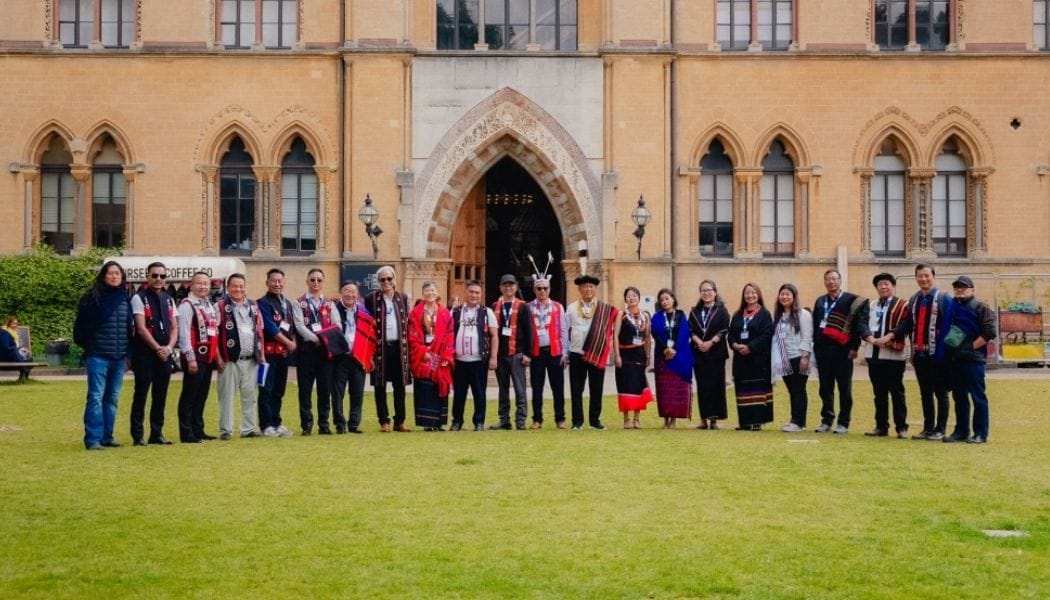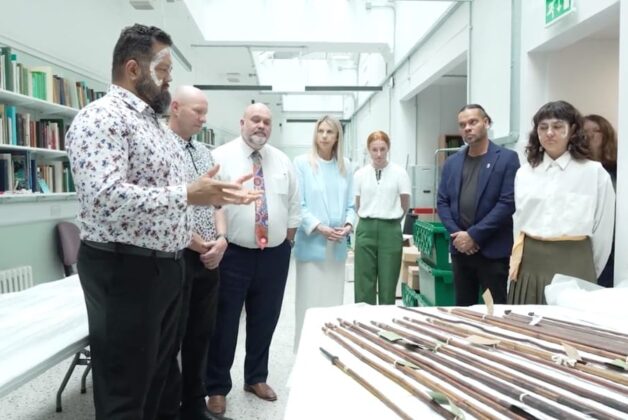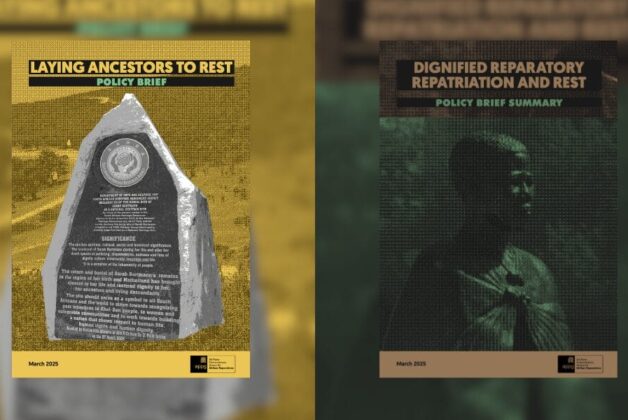Image: A delegation of Naga representatives visits the museum (Pitt Rivers Museum)
Naga representatives meet with Oxford museum staff to explore returning 41 ancestral remains and 178 objects containing human hair from colonial-era collections.
A delegation of Naga representatives has visited the Pitt Rivers Museum in Oxford this month to discuss the repatriation of 41 ancestral remains held in the museum’s collections.
The delegation includes leaders from several Naga tribe hohos, members of the Forum for Naga Reconciliation and the Recover, Restore and Decolonise Group.
The museum holds the world’s largest collection of Naga material, much collected by colonial administrators in the early 20th century. The collections include 219 items listed as Naga human remains, consisting of 41 ancestral human remains and 178 objects that contain or may contain human hair.
The initiative began after Professor Dolly Kikon contacted museum director, Professor Laura Van Broekhoven following the museum’s 2020 decision to remove all human remains from display. A public session took place on 13 June featuring speakers including Professor Kikon, Dr Vihuto Asumi, Dr Ellen Konyak Jamir and Professor Van Broekhoven.
Professor Dolly Kikon from the University of California, Santa Cruz, said: “This is not just a visit for the Naga delegation. It is an act of healing, of returning sovereign decision making, and reclaiming the dignity of our ancestors and the Naga people.”
Professor Van Broekhoven said: ”We know that this week will be one that we will feel grief and sadness when looking back on the past, but we will also feel hope as we work towards reconciliation and healing in the future. I hope we can support and hold each other throughout this process.”
Professor Kikon added: ““This is not just a visit for the Naga delegation. It is an act of healing, of returning sovereign decision making, and reclaiming the dignity of our ancestors and the Naga people. For the Naga people, this partnership with the Pitts Rivers Museum is crucial to address the colonial violence and rewrite the labels museums have imposed on the Naga’s past as primitives, savages and head-hunters.
“Our ancestral remains, including the material artefacts at this museum, must move beyond institutional understandings of property and conservation. It is through such partnerships grounded on mutual trust and respect to listen and dialogue between museums and Indigenous communities that we can work towards healing and restoring the task of redress, care, custodianship.”





